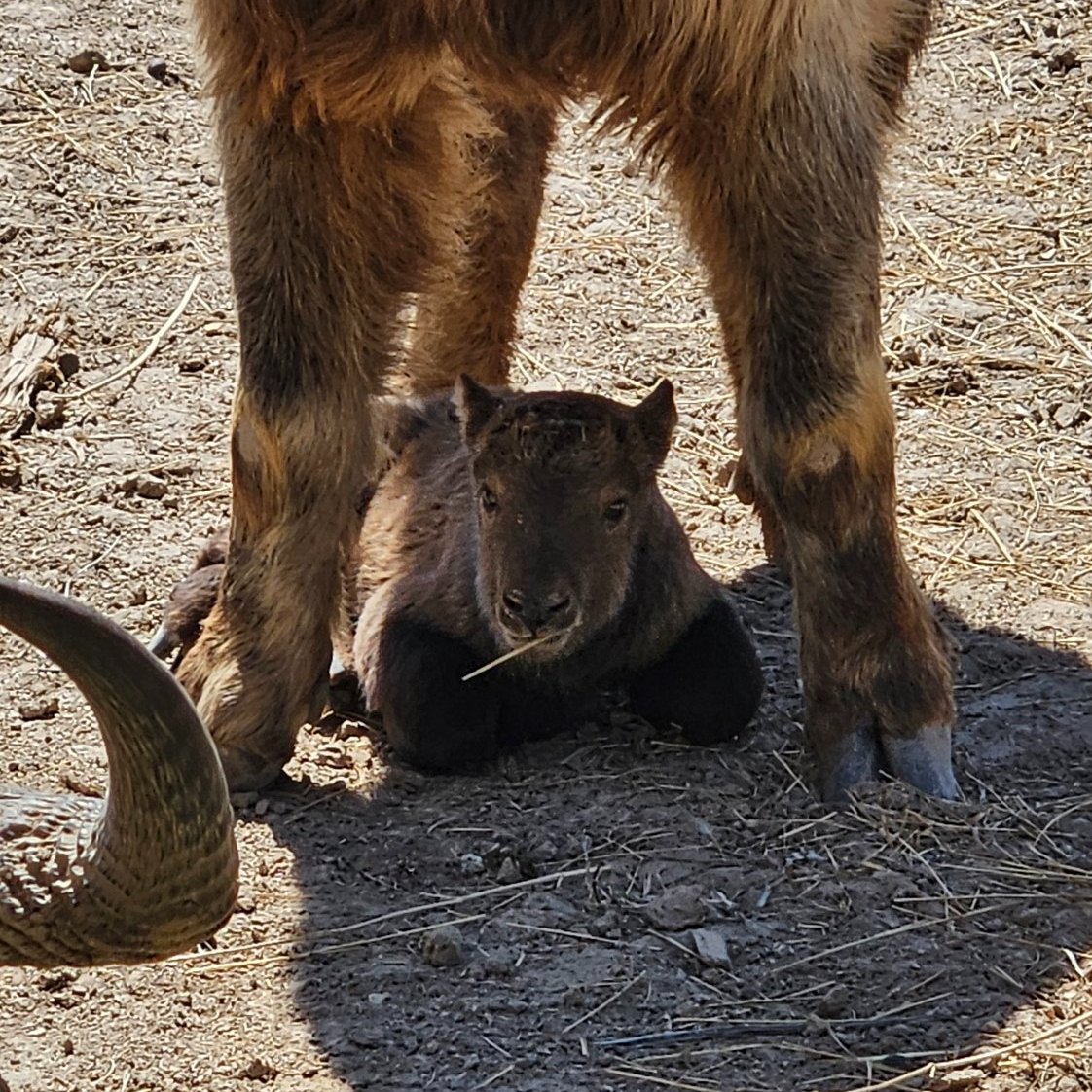- Introduction to the Sichuan takin and its significance within zoology and wildlife conservation.
- A closer look at the newest member of the Pueblo Zoo, Kalsang, the Sichuan takin calf, and his developmental progress.
- The role of zookeepers in the care and well-being of calves like Kalsang and the importance of naming in wildlife management.
- Conservation efforts for endangered species like the Sichuan takin and how zoos contribute to these initiatives.
- How can the public engage with and support conservation efforts through zoo visits and education?
The Sichuan takin is a captivating member of the bovid family, closely related to sheep and goats, and is characterized by its muscular build, distinctive horns, and thick golden-woolly coat tailored for its cold mountain habitats. Native to the eastern Himalayas and western China, these animals are of significant interest to conservationists and zoologists due to their vulnerable status – a result of habitat loss, hunting, and other environmental pressures.
Recently, the Pueblo Zoo welcomed a new addition to their takin family – a spirited little boy named Kalsang, which translates to “good fortune.” The birth of Kalsang is a beacon of hope for the species and an exciting development for the zoo community. Weighing a sturdy amount at birth, he already shows the robust and curious nature of takin calves. Kalsang’s arrival is a testament to the committed efforts of zoo staff and a symbol of good fortune not only for his species but for the broader efforts of conservation.
Caring for a newborn takin like Kalsang involves a comprehensive approach. Zookeepers closely monitor his nourishment, play, and interactions with his mother to ensure a healthy upbringing. They also track his growth milestones – from the first clumsy steps to developing his grazing habits. This careful monitoring assures Kalsang receives all he needs to thrive. The critical early months are when he establishes a bond with his mother and the rest of the herd, learning the social structures and behaviors vital for his development.
The practice of naming animals serves several functions in a zoo setting. It aids in the identification and record-keeping necessary for genomic studies and breeding programs, fostering an emotional connection that can enhance the educational impact for visitors and staff alike. Names like Kalsang often carry cultural significance or relate to physical traits, and they can serve as an engaging bridge between animals and human observers.
Beyond the day-to-day care, the Pueblo Zoo and other wildlife sanctuaries play a critical role in global conservation efforts. Zoos act as arks of genetic diversity, providing safeguards against the complete loss of species like the Sichuan takin. Together with in-situ conservation (efforts made within native habitats), zoos engage in scientific research, captive breeding programs, and reintroduction initiatives. They aim to sustain genetically diverse and demographically stable animal populations in captivity and the wild.
Public interactions with zoos like the Pueblo Zoo have immense potential to fuel conservation endeavors. The cute appeal of calves such as Kalsang draws crowds, serving as a springboard to raise awareness of the plight of lesser-known species. Visitors gain insight into the creatures’ natural behaviors and the ecological challenges they face. Zoos offer these educational experiences, striving to inspire visitors to adopt conservation-minded lifestyles and support initiatives that protect animals and their habitats.
Participation in conservation can also be more direct. For instance, individuals are encouraged to support zoos through memberships, adoptions, volunteering, or participating in citizen-science projects. These contributions help ensure the ongoing care of residents like Kalsang and fund essential research and conservation work.
Kalsang, the newest Sichuan takin at the Pueblo Zoo, is a playful yet powerful symbol of conservation success and persistent wildlife protection efforts. His presence highlights the critical role of informed, active public engagement in sustaining our planet’s biodiversity. His growth and well-being depend on dedicated zoo professionals who combine science and care in their daily work, and the story of Kalsang is far more than just an announcement of a new birth. It is a narrative of hope and a call to action. As Kalsang continues to explore his home, visitors have a unique opportunity to witness conservation in action and to be a part of the collective endeavor to safeguard the future of the Sichuan takin and numerous other species that rely on human stewardship.
*****
Source Description
IT’S A BOY!
Our newest Sichuan takin is a little boy! Keepers have named him Kalsang, which means “good fortune”. He continues to grow and explore his home. Stop by and see this cutie on your next visit to the Pueblo Zoo.
Photo Credit: Keeper Gemini

